The 50-game Mega GTX 1070 Ti SLI Review
Enthusiasts are looking forward to NVIDIA’s next generation of GPUs as a cryptocurrency mining boom is driving the prices of video cards way up. However, whenever there is a boom it is usually followed by a bust, and perhaps inexpensive used and even new Pascal video cards may become available in large quantities before too long.
Some gamers may be tempted to wait for the next generation’s highest-end video cards by buying a second GTX 1070/1070 Ti/1080/1080 Ti for SLI as an interim solution, and skipping the second-tier next-generation cards that may be offered first. How well does Pascal SLI scale and is it worth buying a second video card for SLI if and when they become reasonably priced?
BTR is very interested in multi-GPU scaling because adding a second video card in SLI offers a good way to nearly double a video card’s performance! Our last SLI benching evaluation used Core i7-8700K at 4.6 GHz to test 35 games. When GTX 1070 Ti SLI scaled well, it was significantly faster than a single GTX 1080 Ti, but it did not always scale. We have tested SLI and CrossFire many times with rather mixed results, and this time we will bring you 51 games.
After finding that nearly half of our then 25-game benchmark suite had scaling issues with SLI just eleven months ago, we concluded that if you play the very latest games on Day 1 and rarely revisit your games, SLI may not be your best choice. Just 2-1/2 months ago, we purchased a second GTX 1070 Ti and we ran 35 game benchmarks with better results for SLI on a new platform: Coffee Lake Core i7-8700K with all six cores overclocked to 4.6 GHz, and 16 GB HyperX DDR4 at 3333 MHz. Now we are benching at 4.7 GHz and have added 16 games for a total of 51.
Our EVGA Z370 FTW motherboard allows for a full space between the SLI’d cards, and temperatures are never an issue although the GTX 1070 Ti Founders Edition runs hotter as the top card because it is heated from below by the Gigabyte GTX 1070 Ti, and its average locked-on Boost in SLI is 1911 MHz while the Gigabyte card manages 1923 MHz.
The High Bandwidth SLI Bridge
Flexible ribbon SLI bridges that have been generally bundled free with SLI motherboards don’t carry enough bandwidth for upper-midrange Pascal SLI which is why some motherboard manufacturers are now including generic-looking High Bandwidth (HB) SLI bridges.

HB bridges are necessary to support sufficient bandwidth for high-resolution displays. Below is a chart from the NVIDIA GTX 1080 Reviewer’s Guide that can also be applied to the GTX 1070 Ti as they are relatively close in performance:
We didn’t see see any FPS performance differences between using a single ribbon SLI bridge versus using the HB SLI bridge for GTX 1070 Ti SLI. Rather we noticed an improvement in frametime delivery – smoothness is improved by using the higher bandwidth provided by the HB bridge over a ribbon SLI bridge.
Is it OK to use 2 Standard Flexible Ribbon Bridges?
We found no positive performance improvement by using two ribbon SLI bridges over one bridge contrary to popular opinion. NVIDIA confirmed to BTR that using 2 ribbon bridges together are not recommended:
“With the ribbon cable system, each SLI connection runs independently regardless, so adding the second ribbon provides no benefit.”
Let’s check out the test configuration.
Test Configuration – Hardware
- Intel Core i7-8700K (HyperThreading and Turbo boost is on to 4.7 GHz for all cores; Coffee Lake DX11 CPU graphics).
- EVGA Z370 FTW motherboard (Intel Z370 chipset, latest BIOS, PCIe 3.0/3.1 specification, CrossFire/SLI 8x+8x), supplied by EVGA
- HyperX 16 GB DDR4 (2×8 GB, dual channel at 3333 MHz), supplied by Kingston/HyperX
- GTX 1070 Ti 8 GB, Founders Edition, stock clocks, supplied by NVIDIA
- Gigabyte GTX 1070 Ti Gaming OC 8 GB, stock clocks
- ASUS HB SLI bridge
- 480 GB Team Group SSD for the OS/Win Store games
- Micron 1.92 TB SSD for primary games
- 2 TB Seagate 7200 rpm SSHD for secondary games and storage
- EVGA 1000G 1000W power supply unit
- EVGA CLC 280mm CPU water cooler, supplied by EVGA
- Onboard Realtek Audio
- Genius SP-D150 speakers, supplied by Genius
- EVGA DG-77, mid-tower case supplied by EVGA
- ASUS 12X Blu-ray writer
- Monoprice Crystal Pro 4K
- LG 43UJ6300 HDR 4K TrueMotion 120 UHD TV
Test Configuration – Software
- GeForce 360.65 drivers. High Quality, prefer maximum performance.
- VSync is off in the control panel.
- AA enabled as noted in games; all in-game settings are specified with 16xAF always applied
- All results show average frame rates including minimum frame rates shown in italics on the chart next to the averages in smaller font.
- Highest quality sound (stereo) used in all games.
- Windows 10 64-bit Home edition. All DX11 titles were run under DX11 render paths, DX12 titles are run under the DX12 render path unless they do not scale in SLI, and two Games use the Vulkan API (and 1 game also uses the OpenGL API)
- Latest DirectX
- All games are patched to their latest versions at time of publication.
- MSI’s Afterburner, latest version to lock SLI’d clocks and to set power and temp targets to maximum.
- OCAT, latest version, for DX12/Vulkan game benching
- Fraps, latest version, for DX11/OpenGL game benching
51 PC Game benchmark suite & 4 synthetic tests
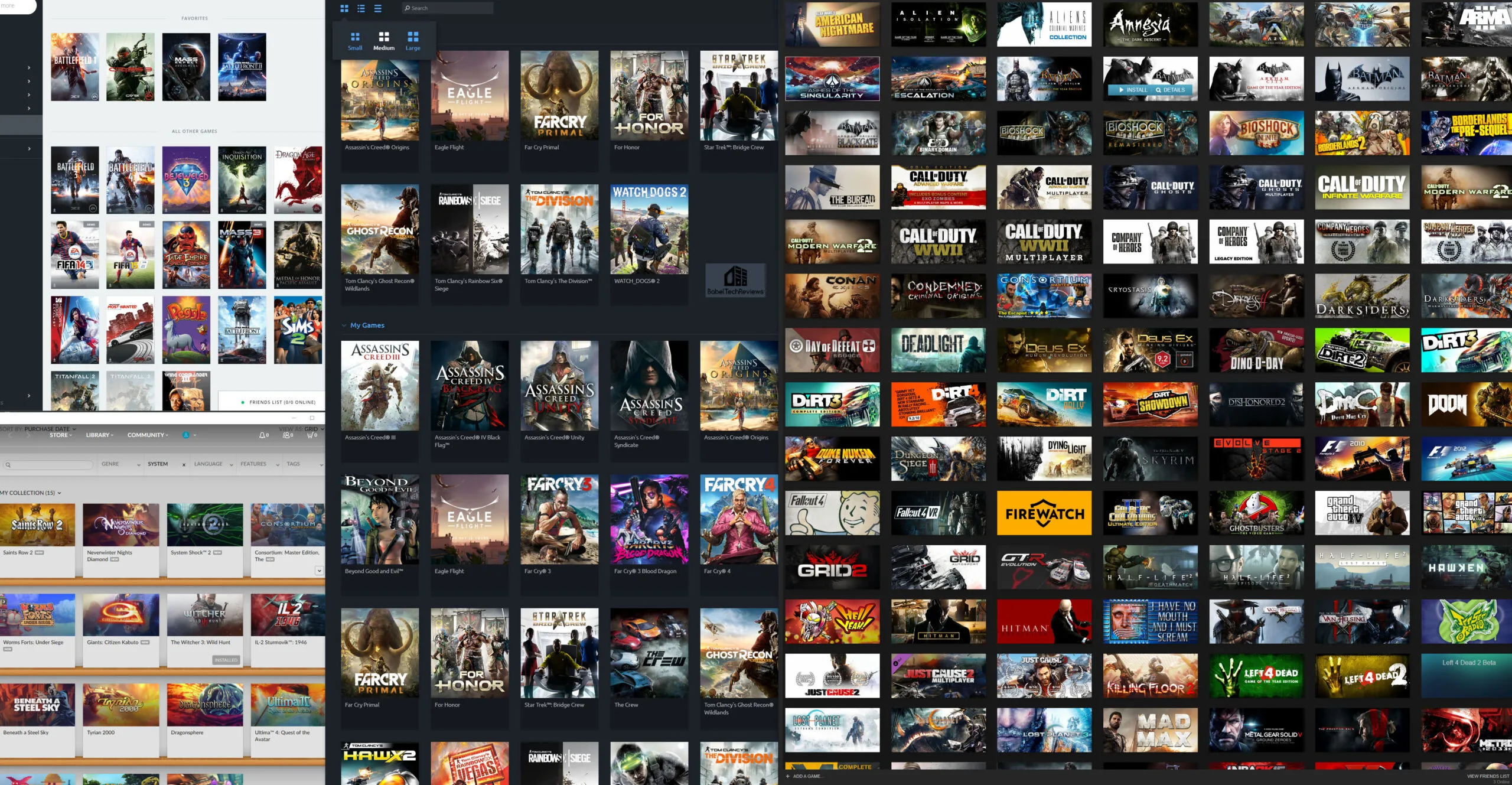 Synthetic
Synthetic
- Firestrike – Basic & Extreme
- Time Spy DX12
DX11 Games
- Sleeping Dogs
- Crysis 3
- Metro: Last Light Redux
- Thief
- Dragon’s Age: Inquisition
- Thief
- Middle Earth: Shadow of Mordor
- Alien Isolation
- Dying Light
- Grand Theft Auto V
- The Witcher 3
- Mad Max
- Metal Gear Solid: The Phantom Pain
- The Vanishing of Ethan Carter
- Fallout 4
- Mirror’s Edge: Catalyst
- Just Cause 3
- Rainbow Six Siege
- Far Cry Primal
- Call of Duty Infinite Warfare
- Battlefield 1
- Shadow Warrior 2
- Titanfall 2
- Watch Dogs 2
- Resident Evil 7
- For Honor
- Ghost Recon Wildlands
- Mass Effect: Andromeda
- Prey
- DiRT 4
- Ark: Survival Evolved
- Project CARS 2
- Middle Earth: Shadow of War
- Assassin’s Creed Origins
- Destiny 2
- Star Wars: Battlefront II
- Call of Duty World War II
- Conan: Exiles (Early Access)
DX12 Games
- Tom Clancy’s The Division (DX11)
- Ashes of the Singularity
- Ashes of the Singularity: Escalation
- Hitman (DX11)
- Rise of the Tomb Raider (DX11)
- Deus Ex Mankind Divided
- Civilization VI (DX11)
- Gears of War 4
- Sniper Elite 4
- Total War: Warhammer II
Vulkan & OpenGL Games
- DOOM
- Wolfenstein: The New Order
- Dishonored 2
NVIDIA Control Panel settings:
We used MSI’s Afterburner to set the GeForce cards’ Power and Temperature targets to their maximum. PhysX was set to Auto-select.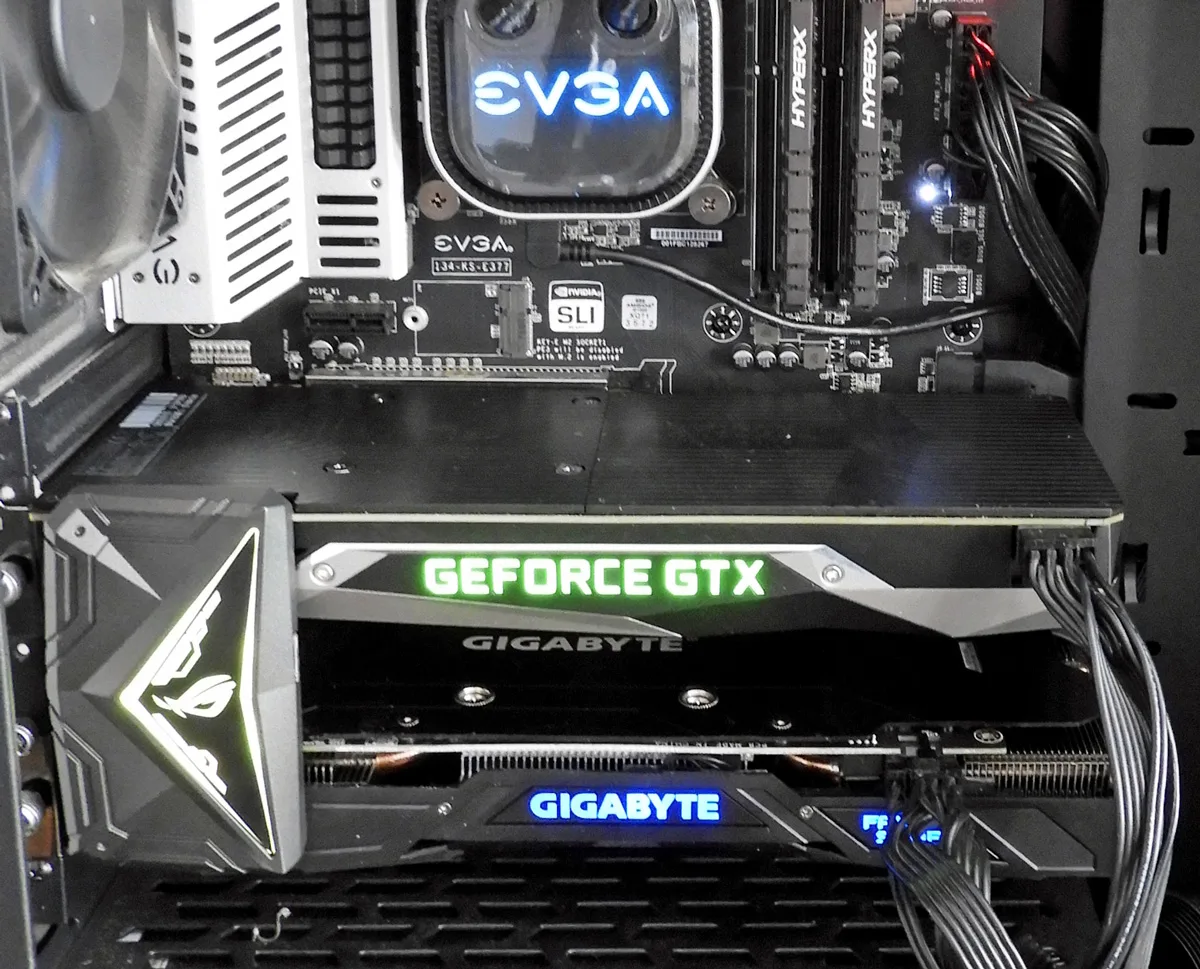 Here are the settings we use in NVIDIA’s control panel.
Here are the settings we use in NVIDIA’s control panel.
Calculating Percentages
There are two methods of calculating percentages. One is the “Percentage Difference” that we originally used to compare the GTX 1080 versus the TITAN X, and the other is “Percentage Change” which we are using now to show the performance increase of GTX 1070 Ti SLI over a single GTX 1070 Ti.
For the percentage change, we mean the increase in framerates between a GTX 1070 Ti and GTX 1070 Ti SLI divided by the absolute value of the original value in FPS, multiplied by 100.
Percentage change may be expressed by the algebraic formula: ( ΔV / |V1| ) * 100 = ((V2 – V1) / |V1|) * 100
Let’s head to our performance charts.
Performance summary charts
Here are the summary charts of 51 games and 2 synthetic tests. The highest settings are always chosen; DX12 is picked above DX11 where available, and the settings are ultra or maxed. Specific settings are listed on the performance charts. The benches were run at 1920×1080, 2560×1440, and at 3840×2160. All game results show average framerates in bold, and minimum framerates are shown next to the averages when available in italics and in a slightly smaller font. In all cases, higher is always better/faster.
The GTX 1070 Ti performance results are in the first green column and GTX 1070 Ti SLI results are shown in the second darker green column. The 3rd yellow column shows the percentage increase from the GTX 1070 Ti results to GTX 1070 Ti SLI results – negative scaling is shown as “negative”, while any number result is the GTX1070 Ti SLI performance increase over a single GTX 1070 Ti expressed as a percentage.

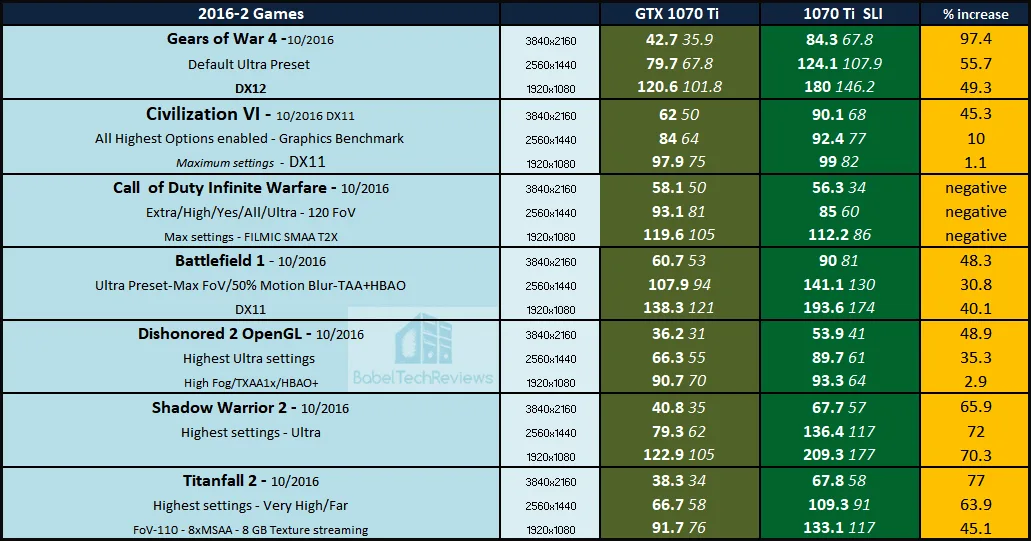
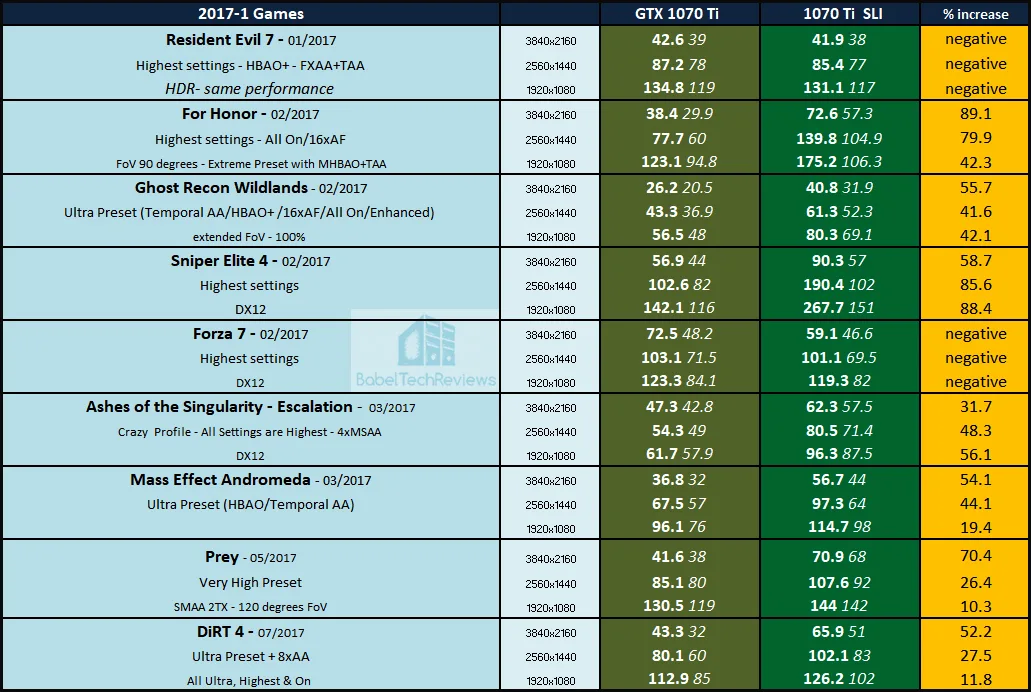
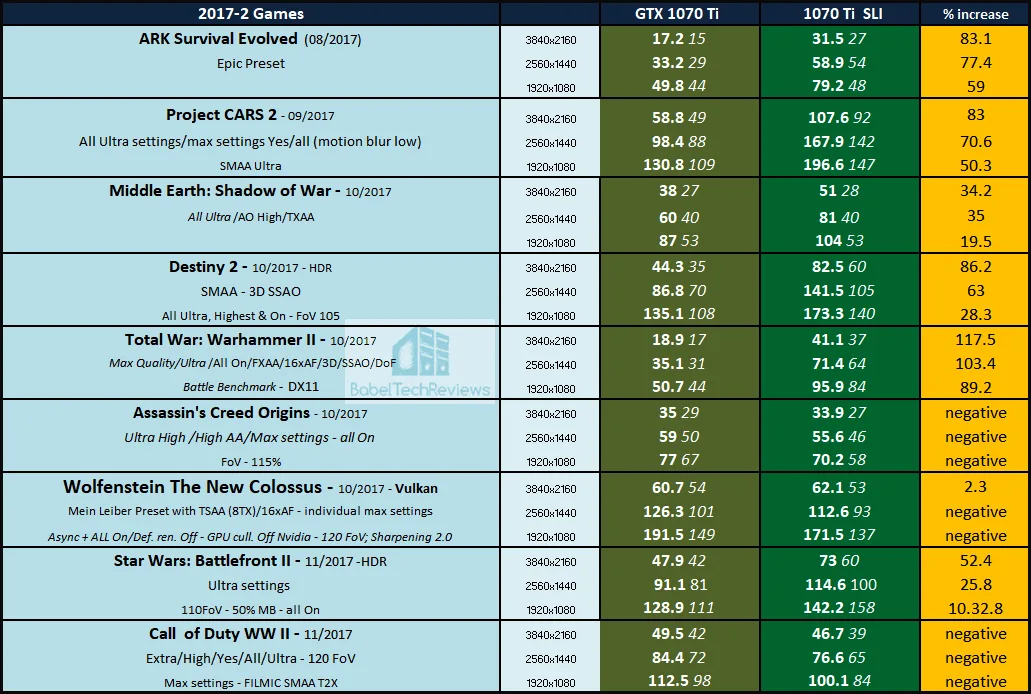

Out of the 51 games that we tested, we are only going to count 50 as Conan Exiles is still in early access and will not be released until March. Seven games scale negatively with SLI and three more games have mixed scaling results depending on resolution. Four other games need to be played in DX11 which is generally not a negative when an alternate API is available. So eighty percent of our 50 games – 40 games – generally scale positively with SLI and most of them give solid performance increases depending on the resolution. 4K often sees the most benefit where it is mostly needed. In addition, Metro Last Light Redux used to scale with SLI, but a recent driver update broke SLI.
We also note that GTX 1070 Ti SLI is generally overkill for 1920×1080 as it generally scales rather poorly compared with scaling at higher resolutions although there are exceptions. Ideally, a gamer would pick GTX 1070 Ti SLI for 2560×1440 to 4K resolutions. The games that benefit from SLI will sometimes have some dramatic performance increases, often from 20% to sometimes to well over 90%. Several benchmarks show more than 100% scaling, but it is usually because we are comparing DX11 GTX 1070 Ti SLI to a single GTX 1070 Ti running on the DX12 API.
Compared to the last time that we tested SLI just 2-1/2 months ago, we have seen a further improvement in SLI performance for the games that NVIDIA can improve with drivers. Several games like Assassin’s Creed: Origins and Call of Duty: WW II probably will never implement SLI as their respective predecessors also eschewed mGPU (multi-GPU).
Let’s head for our conclusion.
Conclusion
This has been quite an enjoyable exploration for us in comparing a single GTX 1070 Ti against GTX 1070 Ti SLI using more than 50 games. SLI scaling is good performance-wise in mostly older games and where the devs specifically support SLI in newer DX11 and in DX12 games. When GTX 1070 Ti SLI scales well, it easily surpasses a single GTX 1080 Ti or TITAN Xp in performance; and when it doesn’t, a single GTX 1070 Ti can usually manage 4K resolution with some visual compromises.
SLI’d GTX 1070 Ti’s are out of reach of most gamers at their current ridiculously high prices, plus the costs of about $45 for a SLI HB bridge if it is not included with a motherboard. However, pricing for Pascal cards may drop after NVIDIA releases the next generation of GeForce video cards and it may become cost-effective for some gamers to upgrade to SLI instead of upgrading to the new cards.
It has become very clear that SLI scaling in the newest games – and especially with DX12 – is going to depend on the developers’ support for each game requiring a SLI gamer to occasionally fall back to the DX11 pathway. We also note that recent drivers may break SLI scaling that once worked as in the case of Metro Last Light, and even a new game patch may affect SLI game performance adversely.
Compared with just 1 year ago, support for SLI has significantly improved and GTX 1070 Ti SLI appears to be a viable upgrade path for someone with a large game library who has a GTX 1070 Ti or any other SLI-capable Pascal GeForce. What makes SLI extra-special is the ability to completely max out details at a high resolution and high framerate, and then to add SuperSampling for amazingly crisp visuals that breathes life into older games. And this evaluation applies to all Pascal SLI as scaling will be similar.
The Verdict:
NVIDIA should be complimented for continually working to improve SLI scaling in games that can scale, and over the past year, we find SLI to be “most improved”. If you want an extremely fast video card configuration and have a large game library that you frequently revisit, GTX 1070 Ti SLI can easily beat a GTX 1080 Ti or a TITAN Xp when it scales, and it is very well-suited for playing at Ultra/4K/60 FPS. But if you play the very latest games on Day 1 and rarely revisit your games, SLI is not your best choice and you should instead buy the most powerful single-GPU video card that you can afford.
We don’t know what the future will bring, but if prices drop on Pascal video cards when the next GeForce generation is launched, SLI may be a potential upgrade path. Stay tuned, there is a lot more coming from BTR. We have just received a Nucleum, a 7-in-1 Type C USB hub from Kingston, and we’ll post a full review next week.
Happy Gaming!
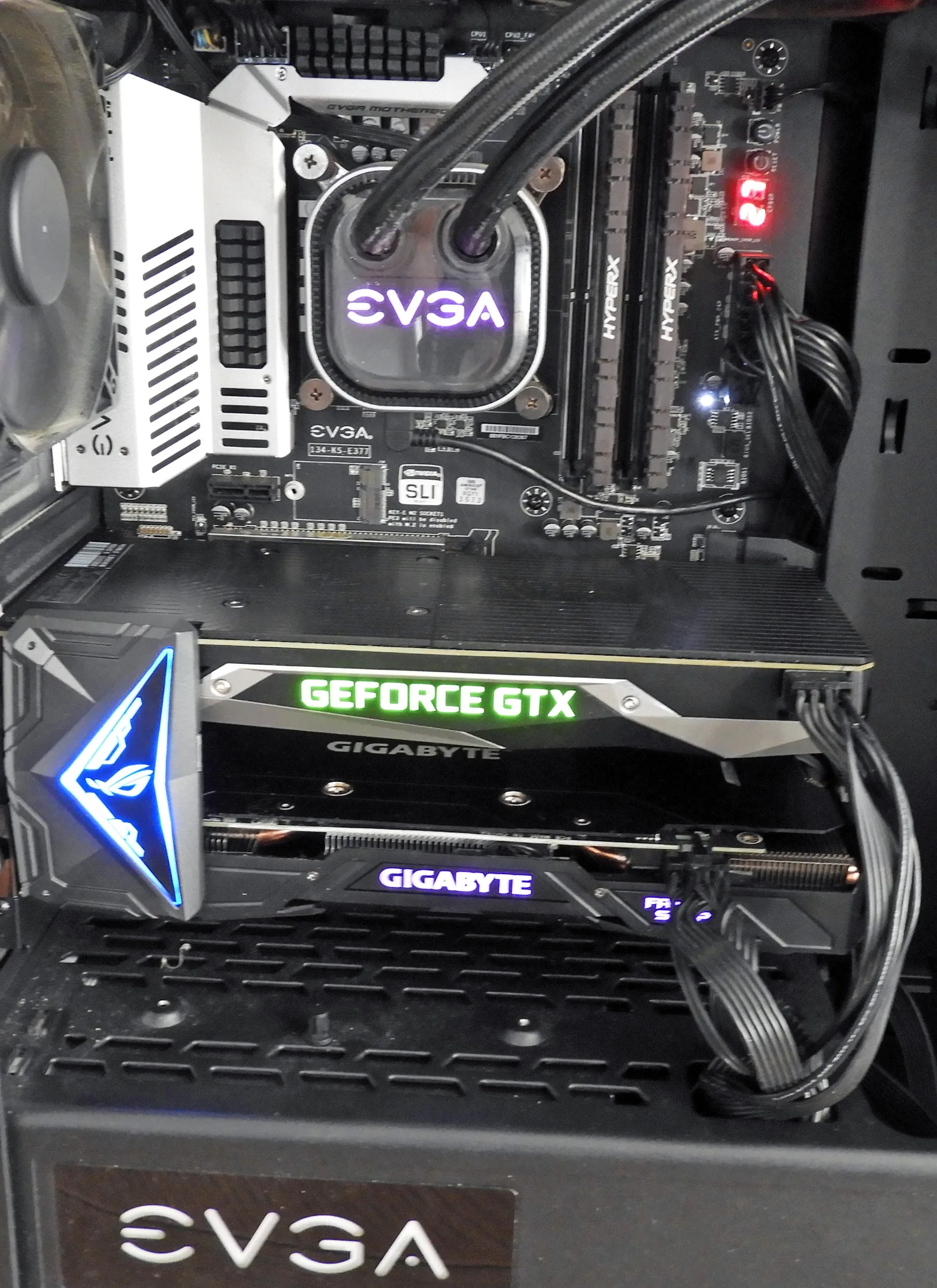

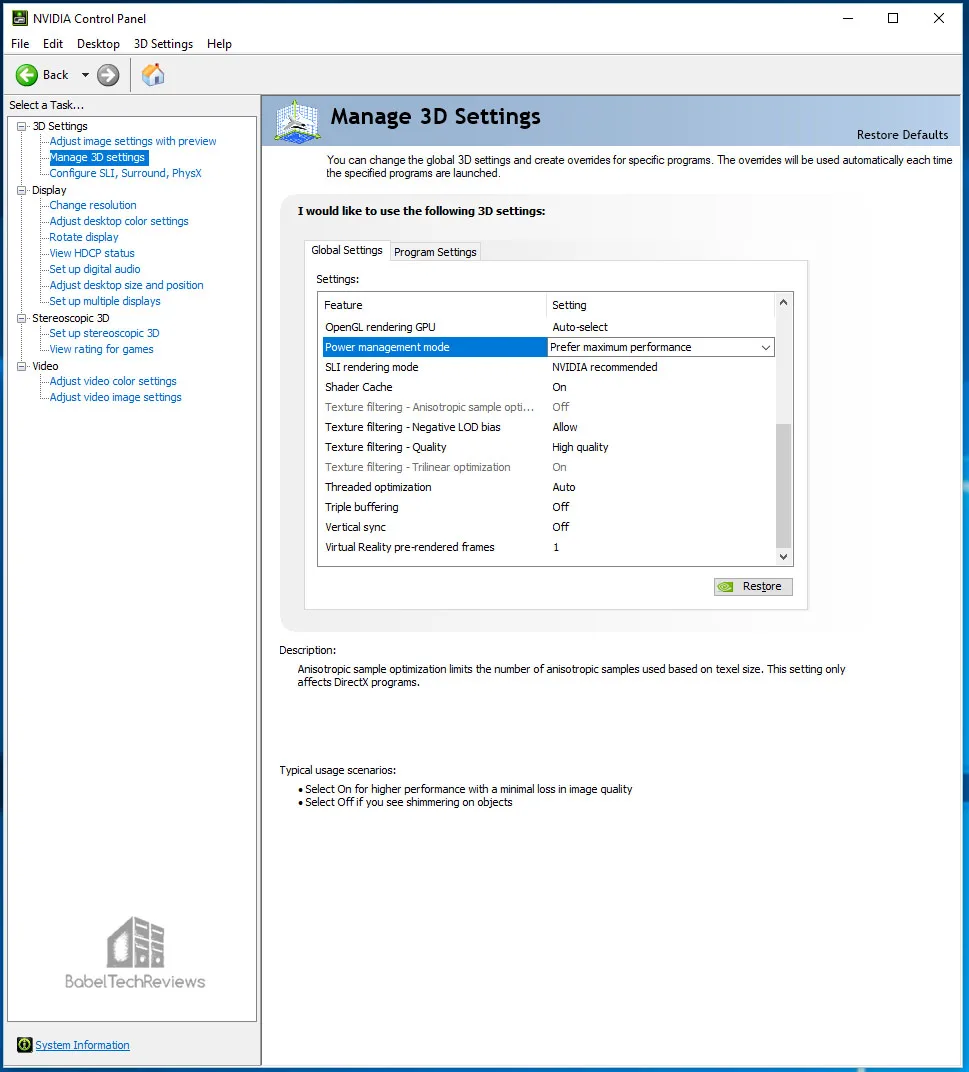
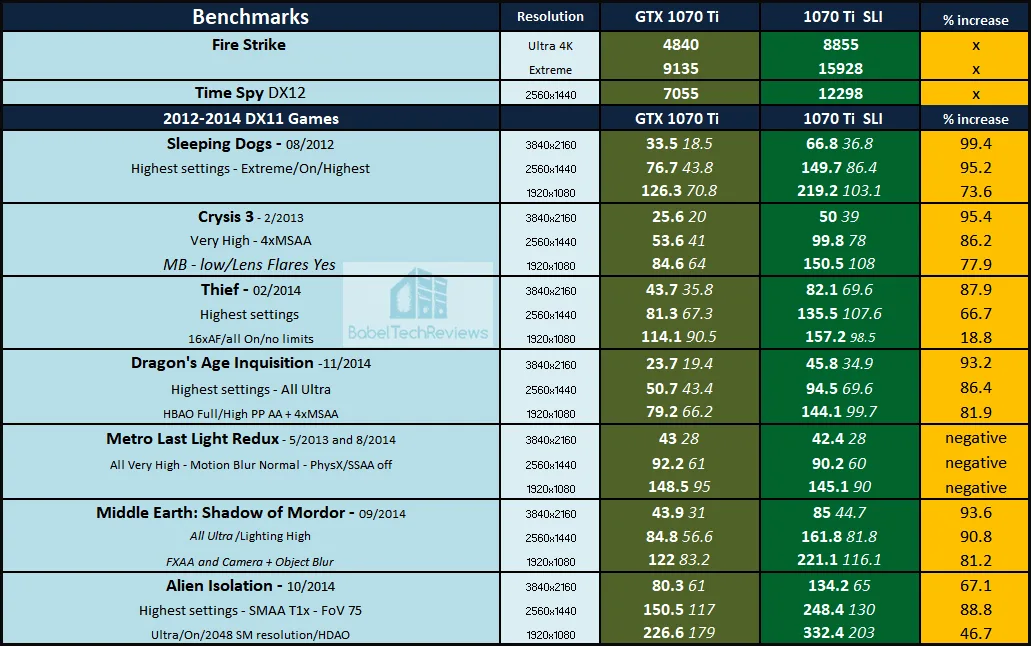
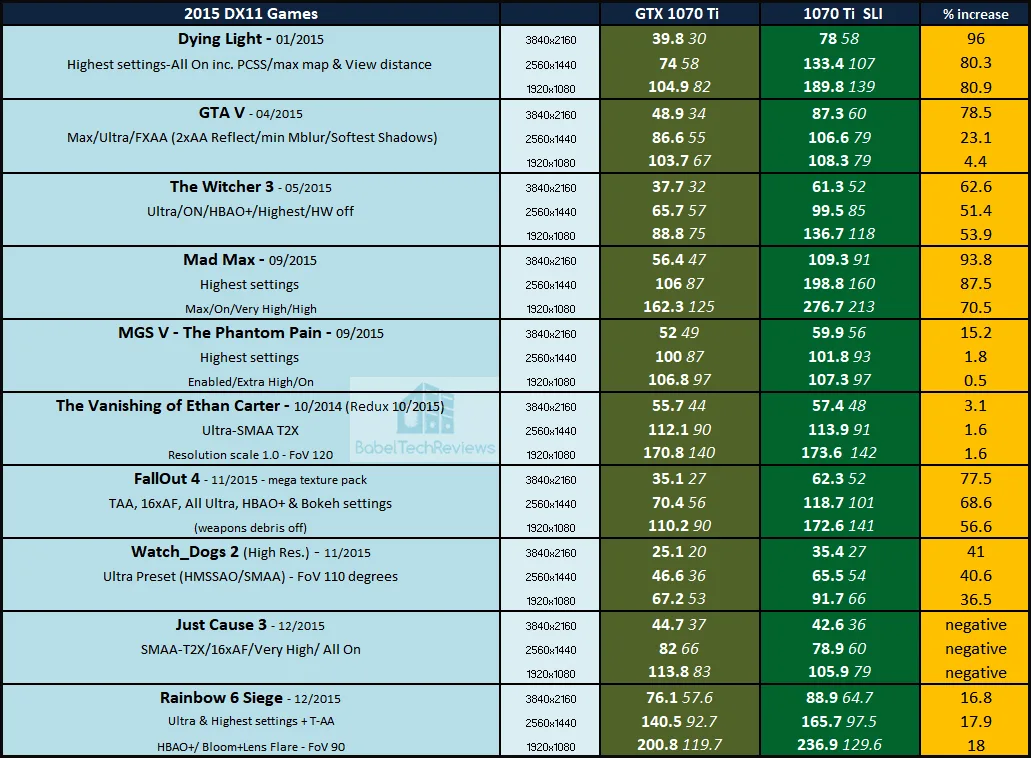
Comments are closed.